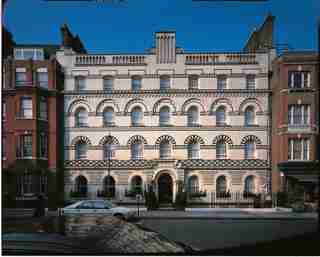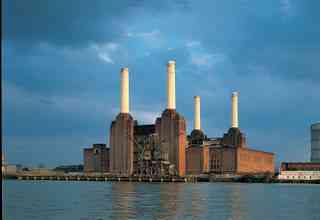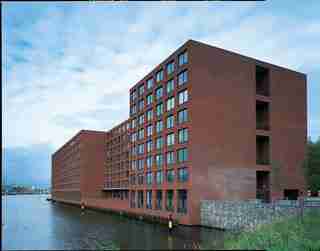“Give me a brick and it becomes worth its weight in gold,” Frank Lloyd Wright once said during a lecture in Milwaukee. And he certainly had a point. The humble brick—a rectangular unit traditionally made of clay laid in mortar—has a history as long as architecture itself. The earthen blocks form the Great Wall in China, the Taj Mahal in India, and the 1,200 miles of Victorian-era sewers that spiderweb beneath the streets of London. Now the newest edition of Brick: A World History (Thames & Hudson, $40) explores the development of the architectural material from the first fired brick in 3500 B.C., which allowed for the creation of permanent structures, to its use in famous modern and contemporary designs by architects such as Renzo Piano, Louis Kahn, and Alvar Aalto. Read on to see a selection of brick buildings through history.

The façade of London’s 1901 Howard de Walden Nurses’ Home—now the Langham Court Hotel—is composed entirely of glazed bricks and terra-cotta.

London’s Battersea Power Station was designed by Sir Giles Gilbert Scott in 1933.

Swiss architects Diener & Diener devised Langhaus, a residential building on Amsterdam’s Java Island in 2001.
Sir Edwin Lutyens—an early-20th-century architect who worked in the Queen Anne Revival style—devised Folly Farm, in Sulhamstead, England, between 1906 and 1912. In the 1912 extension (shown) you can see the tumbled brickwork of the arcade.
The third block of the Spaarndammerbuurt complex in Amsterdam—constructed between 1917 and 1920—is a prime example of the architectural style of the Amsterdam School, which emphasized traditional materials and utilitarian design.
Willem Marinus Dudok’s Hilversum Town Hall—commissioned in the Netherlands in 1915—makes use of some 680,000 yellow bricks.
Alvar Aalto finished the façade of his Baker House—a residence hall at MIT in Cambridge, Massachusetts, that overlooks the Charles River—with hand-fired clay bricks made from topsoil exposed to the sun.
A monumental brick cube, Louis Kahn’s Phillips Exeter Library—constructed in New Hampshire between 1969 and 1971—features a pseudo-arcade that runs around the base of the building.
